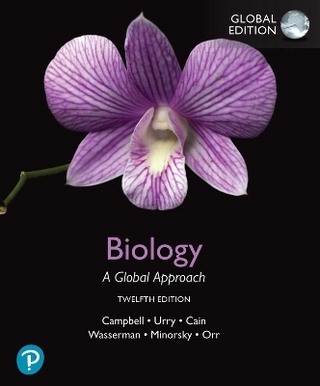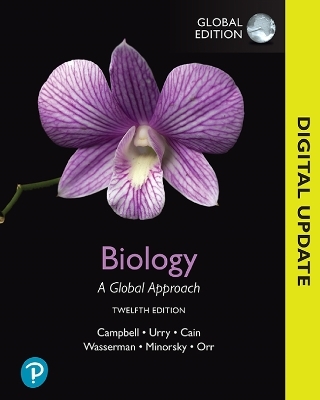
Mass Spectrometry in Structural Biology and Biophysics – Architecture, Dynamics and Interaction of of Biomolecules 2e
John Wiley & Sons Inc (Hersteller)
978-1-118-23212-5 (ISBN)
- Keine Verlagsinformationen verfügbar
- Artikel merken
IGOR A. KALTASHOV, PHD, is a Professor in the Department of Chemistry at the University of Massachusetts Amherst. STEPHEN J. EYLES, PHD, is a Senior Lecturer in the Department of Biochemistry and Molecular Biology, and the Director of the Mass Spectrometry Center at the University of Massachusetts Amherst.
Preface to the Second Edition xi Preface to the First Edition xiii 1 General Overview of Basic Concepts in Molecular Biophysics 1 1.1 Covalent Structure of Biopolymers, 1 1.2 Noncovalent Interactions and Higher Order Structure, 3 1.2.1 Electrostatic Interaction, 3 1.2.2 Hydrogen Bonding, 6 1.2.3 Steric Clashes and Allowed Conformations of the Peptide Backbone: Secondary Structure, 6 1.2.4 Solvent--Solute Interactions, Hydrophobic Effect, Side-Chain Packing, and Tertiary Structure, 7 1.2.5 Intermolecular Interactions and Association: Quaternary Structure, 9 1.3 The Protein Folding Problem, 9 1.3.1 What Is Protein Folding?, 9 1.3.2 Why Is Protein Folding So Important?, 10 1.3.3 What Is the Natively Folded Protein and How Do We Define a Protein Conformation?, 11 1.3.4 What Are Non-Native Protein Conformations?: Random Coils, Molten Globules, and Folding Intermediates, 12 1.3.5 Protein Folding Pathways, 13 1.4 Protein Energy Landscapes and the Folding Problem, 14 1.4.1 Protein Conformational Ensembles and Energy Landscapes: Enthalpic and Entropic Considerations, 14 1.4.2 Equilibrium and Kinetic Intermediates on the Energy Landscape, 16 1.5 Protein Dynamics and Function, 17 1.5.1 Limitations of the Structure--Function Paradigm, 17 1.5.2 Protein Dynamics under Native Conditions, 17 1.5.3 Is Well-Defined Structure Required for Functional Competence?, 18 1.5.4 Biomolecular Dynamics and Binding from The Energy Landscape Perspective, 19 1.5.5 Energy Landscapes Within a Broader Context of Nonlinear Dynamics: Information Flow and Fitness Landscapes, 21 1.6 Protein Higher Order Structure and Dynamics from A Biotechnology Perspective, 22 References, 22 2 Overview of Traditional Experimental Arsenal to Study Biomolecular Structure and Dynamics 26 2.1 X-Ray Crystallography, 26 2.1.1 Fundamentals, 26 2.1.2 Crystal Structures at Atomic and Ultrahigh Resolution, 27 2.1.3 Crystal Structures of Membrane Proteins, 27 2.1.4 Protein Dynamics and X-Ray Diffraction, 28 2.2 Solution Scattering Techniques, 28 2.2.1 Static and Dynamic Light Scattering, 28 2.2.2 Small-Angle X-Ray Scattering, 29 2.2.3 Cryo-Electron Microscopy, 29 2.2.4 Neutron Scattering, 30 2.3 NMR Spectroscopy, 30 2.3.1 Heteronuclear NMR, 32 2.3.2 Hydrogen Exchange by NMR, 33 2.4 Other Spectroscopic Techniques, 34 2.4.1 Cumulative Measurements of Higher Order Structure: Circular Dichroism, 34 2.4.2 Vibrational Spectroscopy, 37 2.4.3 Fluorescence: Monitoring Specific Dynamic Events, 39 2.5 Other Biophysical Methods to Study Macromolecular Interactions and Dynamics, 41 2.5.1 Calorimetric Methods, 41 2.5.2 Analytical Ultracentrifugation, 43 2.5.3 Surface Plasmon Resonance, 45 2.5.4 Size Exclusion Chromatography (Gel Filtration), 46 2.5.5 Electrophoresis, 47 2.5.6 Affinity Chromatography, 48 References, 48 3 Overview of Biological Mass Spectrometry 52 3.1 Basic Principles of Mass Spectrometry, 52 3.1.1 Stable Isotopes and Isotopic Distributions, 53 3.1.2 Macromolecular Mass: Terms and Definitions, 57 3.2 Methods of Producing Biomolecular Ions, 57 3.2.1 Macromolecular Ion Desorption Techniques: General Considerations, 57 3.2.2 Electrospray Ionization, 58 3.2.3 Matrix Assisted Laser Desorption Ionization (MALDI), 60 3.3 Mass Analysis, 63 3.3.1 General Considerations: m/z Range and Mass Discrimination, Mass Resolution, Duty Cycle, and Data Acquisition Rate, 63 3.3.2 Mass Spectrometry Combined with Separation Methods, 64 3.4 Tandem Mass Spectrometry, 65 3.4.1 Basic Principles of Tandem Mass Spectrometry, 65 3.4.2 Collision-Induced Dissociation: Collision Energy, Ion Activation Rate, and Dissociation of Large Biomolecular Ions, 66 3.4.3 Surface- and Photoradiation-Induced Dissociation, 68 3.4.4 Electron-Based Ion Fragmentation Techniques: Electron Capture Dissociation and Electron Transfer Dissociation, 71 3.4.5 Ion-Molecule Reactions in the Gas Phase: Internal Rearrangement and Charge Transfer, 71 3.5 Brief Overview of Common Mass Analyzers, 72 3.5.1 Mass Analyzer As an Ion Dispersion Device: Magnetic Sector Mass Spectrometry, 72 3.5.2 Temporal Ion Dispersion: Time-of-Flight Mass Spectrometer, 73 3.5.3 Mass Analyzer As an Ion Filter, 75 3.5.4 Mass Analyzer As an Ion-Storing Device: The Quadrupole (Paul) Ion Trap and Linear Ion Trap, 76 3.5.5 Mass Analyzer As an Ion Storing Device: FT ICR MS, 78 3.5.6 Mass Analyzer as An Ion Storing Device: Orbitrap MS, 80 3.5.7 Ion Mobility Analyzers, 81 3.5.8 Hybrid Mass Spectrometers, 82 References, 82 4 Mass Spectrometry Based Approaches to Study Biomolecular Higher Order Structure 89 4.1 Direct Methods of Structure Characterization: Native Electrospray Ionization Mass Spectrometry, 89 4.1.1 Preservation of Noncovalent Complexes in the Gas Phase: Stoichiometry of Biomolecular Assemblies, 89 4.1.2 Utilization of Ion Chemistry in the Gas Phase to Aid Interpretation of ESI MS Data, 91 4.1.3 Dissociation of Noncovalent Complexes in the Gas Phase: Can It Lead to Wrong Conclusions?, 93 4.1.4 Evaluation of Macromolecular Shape in Solution: The Extent of Multiple Charging in ESI MS, 94 4.1.5 Macromolecular Shape in the Gas Phase: Ion Mobility--Mass Spectrometry, 97 4.1.6 How Relevant Are Native ESI MS Measurements? Restrictions on Solvent Composition in ESI, 98 4.1.7 Noncovalent Complexes by MALDI MS, 98 4.2 Chemical Cross-Linking for Characterization of Biomolecular Topography, 99 4.2.1 Mono- and Bifunctional Cross-Linking Reagents, 99 4.2.2 Chemical Cross-Linkers with Fixed Arm-Length: Molecular Rulers or Tape Measures?, 100 4.2.3 Mass Spectrometry Analysis of Chemical Cross-Linking Reaction Products, 102 4.2.4 Intrinsic Cross-Linkers: Methods to Determine Disulfide Connectivity Patterns in Proteins, 108 4.2.5 Other Intrinsic Cross-Linkers: Oxidative Cross-Linking of Tyrosine Side Chains, 109 4.3 Mapping Solvent-Accessible Areas with Chemical Labeling and Footprinting Methods, 110 4.3.1 Selective Chemical Labeling, 110 4.3.2 Nonspecific Chemical Labeling, 115 4.4 Hydrogen Exchange, 116 4.4.1 Hydrogen Exchange in Peptides and Proteins: General Considerations, 116 4.4.2 Probing Exchange Patterns with HDX MS at the Local Level, 116 References, 119 5 Mass Spectrometry Based Approaches to Study Biomolecular Dynamics: Equilibrium Intermediates 127 5.1 Direct Methods of Monitoring Equilibrium Intermediates: Protein Ion Charge-State Distributions in ESI MS, 127 5.1.1 Protein Conformation as a Determinant of the Extent of Multiple Charging in ESI MS, 127 5.1.2 Detection and Characterization of Large-Scale Conformational Transitions by Monitoring Protein Ion Charge-State Distributions in ESI MS, 128 5.1.3 Detection of Small-Scale Conformational Transitions by Monitoring Protein Ion Charge-State Distributions, 130 5.1.4 Pitfalls and Limitations of Protein Ion Charge-State Distribution Analysis, 133 5.2 Chemical Labeling and Trapping Equilibrium States in Unfolding Experiments, 135 5.2.1 Characterization of the Solvent-Exposed Surfaces with Chemical Labeling, 135 5.2.2 Exploiting Intrinsic Protein Reactivity: Disulfide Scrambling and Protein Misfolding, 136 5.3 Structure and Dynamics of Intermediate Equilibrium States by Hydrogen Exchange, 137 5.3.1 Protein Dynamics and Hydrogen Exchange, 137 5.3.2 Global Exchange Kinetics in the Presence of Non-Native States: EX1, EX2, and EXX Exchange Regimes in a Simplified Two-State Model System, 138 5.3.3 A More Realistic Two-State Model System: Effect of Local Fluctuations on the Global Exchange Pattern Under EX2 Conditions, 141 5.3.4 Effects of Local Fluctuations on the Global Exchange Pattern Under EX1 and Mixed (EXX) Conditions, 143 5.3.5 Exchange in Multistate Protein Systems: Superposition of EX1 and EX2 Processes and Mixed-Exchange Kinetics, 144 5.4 Measurements of Local Patterns of Hydrogen Exchange in the Presence of Non-Native States, 146 5.4.1 Bottom-Up Approaches to Probing the Local Structure of Intermediate States, 146 5.4.2 Top-Down Approaches to Probing the Local Structure of Intermediate States, 150 5.4.3 Further Modifications and Improvements of HDX MS in Conformationally Heterogeneous Systems, 153 References, 153 6 Kinetic Studies By Mass Spectrometry 160 6.1 Kinetics of Protein Folding, 160 6.1.1 Stopped-Flow Measurement of Kinetics, 160 6.1.2 Kinetic Measurements with Hydrogen Exchange, 162 6.2 Kinetics by Mass Spectrometry, 163 6.2.1 Pulse Labeling Mass Spectrometry, 163 6.2.2 Continuous-Flow Mass Spectrometry, 168 6.2.3 Stopped-Flow Mass Spectrometry, 169 6.2.4 Kinetics of Disulfide Formation During Folding, 171 6.2.5 Irreversible Covalent Labeling As a Probe of Protein Kinetics, 172 6.3 Kinetics of Protein Assembly, 174 6.4 Kinetics of Enzyme Catalysis, 178 References, 181 7 Protein Interactions: A Closer Look at the Structure --Dynamics--Function Triad 186 7.1 Direct Methods of Monitoring Protein Interactions with Their Physiological Partners in Solution by ESI MS: From Small Ligands to Other Biopolymers, 186 7.2 Assessment of Binding Affinity with Direct ESI MS Approaches, 189 7.3 Indirect Characterization of Non-covalent Interactions Under Physiological and Near-Physiological Conditions, 190 7.3.1 Assessment of Ligand Binding by Monitoring Dynamics of "Native" Proteins with Hydrogen--Deuterium Exchange (HDX MS), 190 7.3.2 PLIMSTEX and Related Techniques: Binding Assessment by Monitoring Conformational Changes with HDX MS in Titration Experiments, 192 7.3.3 Binding Revealed by Changes in Ligand Mobility, 194 7.4 Indirect Characterization of Noncovalent Interactions Under Partially Denaturing Conditions, 194 7.4.1 Ligand-Induced Protein Stabilization Under Mildly Denaturing Conditions: Effect of Ligand Binding on Charge-State Distributions of Protein Ions, 195 7.4.2 SUPREX: Utilizing HDX Under Denaturing Conditions to Discern Protein--Ligand Binding Parameters, 196 7.5 Understanding Protein Action: Mechanistic Insights from the Analysis of Structure and Dynamics under Native Conditions, 198 7.5.1 Dynamics at the Catalytic Site and Beyond: Understanding Enzyme Mechanism, 198 7.5.2 Allosteric Effects Probed by HDX MS, 201 7.6 Going Full Circle with MS: Native ESI MS Reveals Structural Changes Predicted by HDX MS Measurements, 201 7.7 Understanding Protein Action: Mechanistic Insights from the Analysis of Structure and Dynamics under Non-Native (Partially Denaturing) Conditions, 203 References, 206 8 Other Biopolymers and Synthetic Polymers of Biological Interest 212 8.1 Nucleic Acids, 212 8.1.1 Characterization of the Covalent Structure of Nucleic Acids, 212 8.1.2 DNA Higher Order Structure and Interactions with Physiological Partners and Therapeutics, 215 8.1.3 Higher Order Structure and Dynamics of RNA, 219 8.2 Oligosaccharides, 223 8.2.1 Covalent Structure of Oligosaccharides, 225 8.2.2 Higher Order Structure of Oligosaccharides and Interactions with their Physiological Partners, 226 8.3 Synthetic Polymers and their Conjugates with Biomolecules, 226 8.3.1 Covalent Structure of Polymers and Polymer--Protein Conjugates, 229 8.3.2 Higher Order Structure of Polymers and Polymer--Protein Conjugates, 232 References, 233 9 Mass Spectrometry on the Frontiers of Molecular Biophysics and Structural Biology: Perspectives and Challenges 239 9.1 Mass Spectrometry and the Unique Challenges of Membrane Proteins, 239 9.1.1 Analysis of Membrane Proteins in Organic Solvents, 240 9.1.2 Analysis of Membrane Proteins Using Detergents, 241 9.1.3 Analysis of Membrane Proteins Utilizing Other Membrane Mimics, 244 9.1.4 Analysis of Membrane Proteins in Their Native Environment, 249 9.2 The Protein Aggregation Problem, 249 9.2.1 The Importance and Challenges of Protein Aggregation, 249 9.2.2 Direct Monitoring of Protein Aggregation and Amyloidosis with Mass Spectrometry, 250 9.2.3 Structure of Protein Aggregates, Amyloids, and Pre-Amyloid States, 253 9.3 The Many Faces of Complexity: Mass Spectrometry and the Problem of Structural Heterogeneity, 258 9.4 How Large Is "Too Large"? Mass Spectrometry in Characterization of Ordered Macromolecular Assemblies, 263 9.4.1 Proteasomes, 264 9.4.2 Ribosomes, 264 9.4.3 Molecular Chaperones, 267 9.5 Complexity of Macromolecular Interactions In Vivo and Emerging Mass Spectrometry Based Methods to Probe Structure and Dynamics of Biomolecules in Their Native Environment, 269 9.5.1 Macromolecular Crowding Effect, 269 9.5.2 Macromolecular Properties In Vitro and In Vivo, 270 9.5.3 "Live" Macromolecules: Equilibrium Systems or Dissipative Structures?, 271 References, 272 Appendix: Physics of Electrospray 279 Index 285
| Erscheint lt. Verlag | 22.2.2012 |
|---|---|
| Verlagsort | New York |
| Sprache | englisch |
| Maße | 150 x 250 mm |
| Gewicht | 666 g |
| Themenwelt | Naturwissenschaften ► Biologie |
| Naturwissenschaften ► Chemie | |
| Naturwissenschaften ► Physik / Astronomie | |
| Technik | |
| ISBN-10 | 1-118-23212-7 / 1118232127 |
| ISBN-13 | 978-1-118-23212-5 / 9781118232125 |
| Zustand | Neuware |
| Haben Sie eine Frage zum Produkt? |
aus dem Bereich

